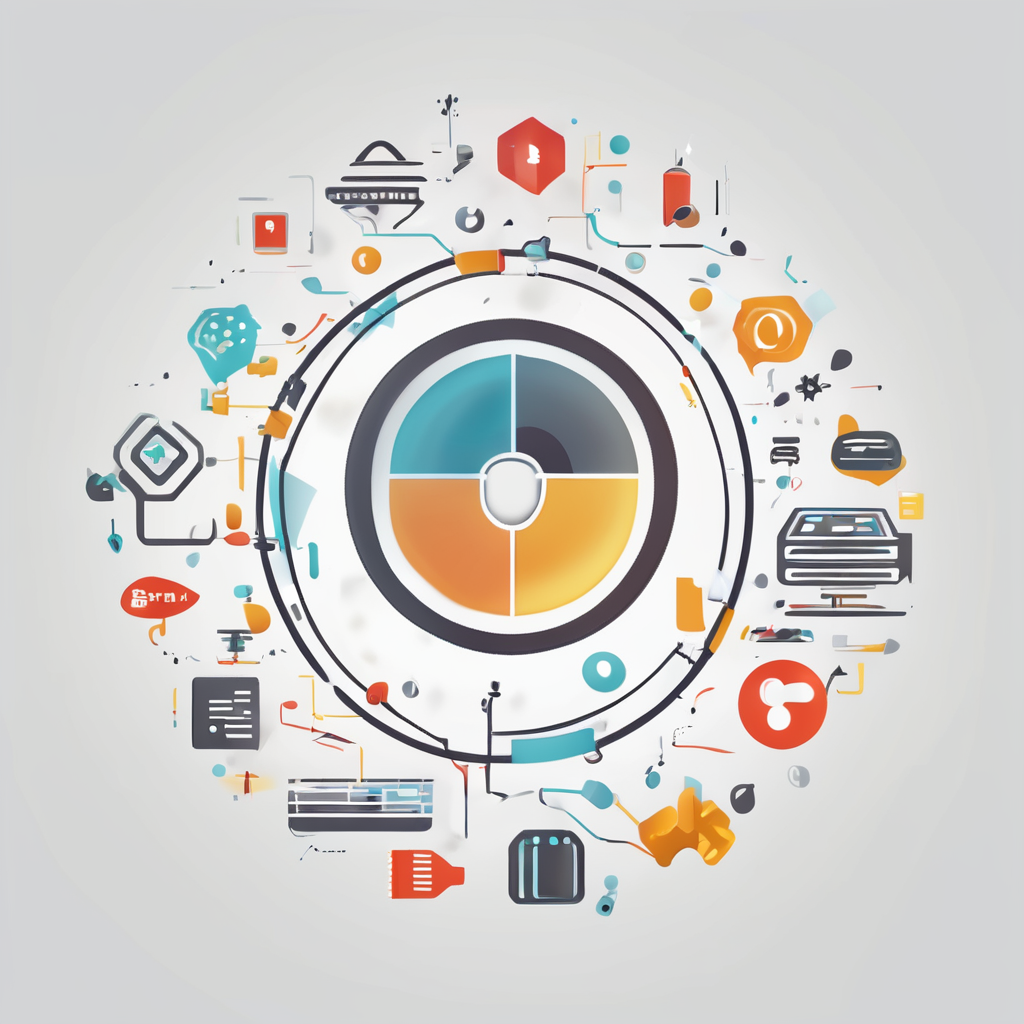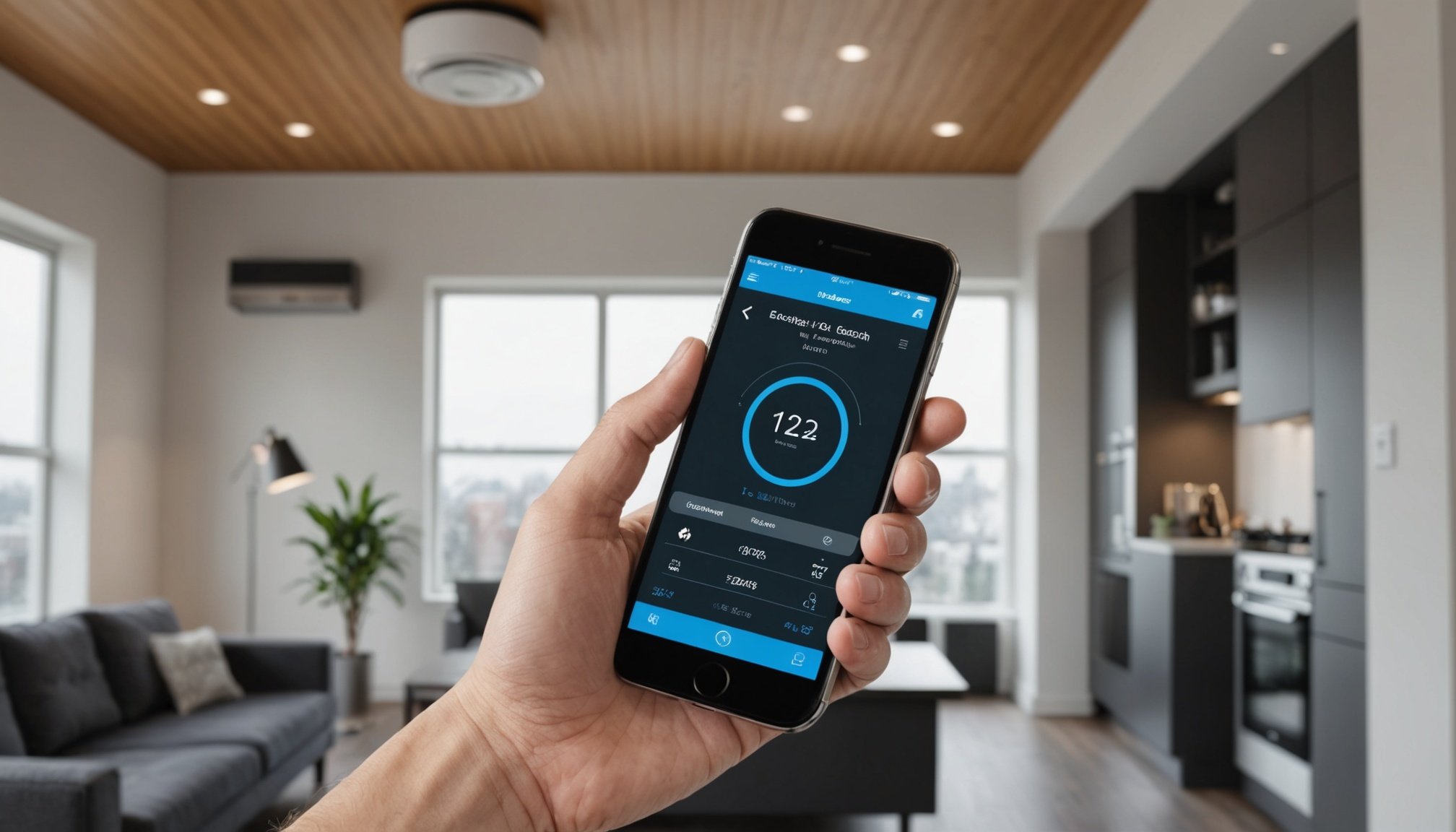Understanding Smart HVAC Systems
Smart HVAC systems represent a groundbreaking shift in how we manage indoor climate control. These systems incorporate advanced technology to optimize heating, ventilation, and air conditioning, ensuring ideal living conditions tailored to individual needs. Smart HVAC components typically include intelligent thermostats, sensors, and connectivity devices that communicate with each other to adjust the home’s climate dynamically.
One of the primary advantages of using smart HVAC technology is its ability to learn from user preferences and adapt accordingly. This learning process allows the system to efficiently manage energy consumption, saving homeowners on utility bills while maintaining comfort. Moreover, with smartphone applications, users can remotely monitor and adjust their system settings, ensuring the home environment is perfect even when they are away.
Additional reading : Mastering Remote Desktop: Top Smartphone Techniques for Seamless Access
Key features of smart HVAC systems that enhance user experience include real-time feedback on energy usage and notifications for maintenance requirements. These systems are designed to integrate seamlessly with existing home automation setups, offering even more control over the indoor atmosphere. The accessibility and convenience of smart HVAC systems empower users to create a more comfortable and efficient home environment, meeting modern expectations for convenience and sustainability.
Setting Up Smart HVAC Controls via Smartphone
When setting up smart HVAC controls using a smartphone, selecting the right system is crucial. Smart HVAC systems vary in compatibility, so it’s essential to pick one that suits your current setup and needs.
Additional reading : Ultimate guide to seamless smart home automation: monitor your home in real-time with your smartphone
Selecting the Right Smart HVAC System
Choosing the right smart HVAC system involves understanding your home’s current infrastructure. Research compatible smart thermostats that can integrate seamlessly with your existing HVAC setup. Consider factors such as system compatibility, desired features, and your specific heating and cooling requirements.
Installation Process of Smart Thermostats
The installation process for smart thermostats should be straightforward if you follow the detailed guide provided with the device. Start by turning off the power to your HVAC setup. Carefully remove the old thermostat and attach the new smart one, reconnecting the necessary wires. Ensure the thermostat is installed firmly and reconnect your power.
Connecting Your HVAC System to a Smartphone App
Connecting your HVAC system to a smartphone app usually begins by downloading the manufacturer’s app on your device. Create an account, add your thermostat, and ensure your smartphone is on the same Wi-Fi network as the thermostat. This connection allows you to control your HVAC system remotely, enhancing user convenience. Always follow the setup instructions meticulously to ensure optimal functionality and avoid system disruptions.
Features of Smart HVAC Applications
Smart HVAC apps have become indispensable household tools, offering a range of functionalities that streamline home climate control. These applications typically boast a plethora of monitoring features. From real-time tracking to detailed reports, users can keep abreast of their home’s energy usage, temperature variations, and system performance.
A significant advantage of using HVAC apps is their ability to offer control capabilities, all within user-friendly interfaces. These interfaces are designed to be intuitive, ensuring even those new to smart technology can navigate them with ease. Users can manage home climates remotely, adjusting settings according to their preferences and routines.
Customization is a standout feature in these applications. They allow users to tailor temperature settings and schedules to match their needs seamlessly. Imagine having the freedom to set your home to a perfect temperature as you head back from a long day, or scheduling a gradual increase in warmth before you even wake up. This is not just convenience; it ensures comfort and optimized system efficiency.
Overall, whether you are looking to monitor, manage, or modify your home environment, HVAC apps are pivotal in bringing unprecedented control and efficiency to your fingertips.
Energy Efficiency and Cost-Saving Benefits
In today’s world, finding ways to maximize energy savings and achieve significant cost reduction is more important than ever. Smart HVAC (Heating, Ventilation, and Air Conditioning) systems are becoming a popular solution for homeowners seeking these benefits.
Understanding Energy Consumption Patterns
A key aspect of increasing energy efficiency lies in understanding consumption patterns. Smart HVAC systems collect data and provide insights into when and how energy is used, allowing homeowners to identify peak usage times and adjust their habits accordingly. This information is crucial for making informed decisions that lead to energy savings and can significantly reduce overall costs.
How Smart HVAC Systems Reduce Energy Costs
These advanced systems use various technologies to optimise energy use. Features like programmable thermostats and zoned heating and cooling enable users to target specific areas with precision, ensuring energy is not wasted in unoccupied spaces. Additionally, some systems incorporate sensors that detect occupancy and adjust settings automatically, enhancing cost reduction.
Importance of Regular Maintenance for Efficiency
Regular maintenance is vital for ensuring that an HVAC system operates efficiently. Routine inspections, filter replacements, and cleaning can prevent issues that decrease performance and increase energy consumption. By staying proactive, homeowners can maintain smart HVAC efficiency and enjoy ongoing energy savings, prolonging the life of their systems while minimizing expenses.
Comparing Different Smart HVAC Products
In today’s market, numerous smart HVAC models offer advanced technology solutions for efficient climate control. When conducting a product comparison, it’s crucial to assess each model based on features, pricing, and user reviews to find the one that best meets your specific needs.
Among popular systems, some stand out due to their unique features. For instance, certain models, equipped with AI-driven sensors, can learn from your habits and adjust settings autonomously. Others might offer seamless integration with smart home ecosystems, enhancing user convenience and control.
Features analysis should include evaluating energy efficiency ratings, compatibility with mobile applications, and the depth of customisation available. Pricing varies significantly across models, often correlating with the range of features and technological integrations offered. It’s essential to understand what you’re getting for your investment.
User reviews provide real-world insights into the reliability and performance of these systems. They can highlight the efficiency of heating and cooling functions, ease of installation, and any potential technical challenges.
For selecting the best smart HVAC solution, consider:
- Assessing compatibility with existing home technology
- Identifying your primary needs (e.g., energy efficiency, ease of use)
- Evaluating long-term cost savings against initial investment
Understanding these elements will empower you to make an informed decision.
User Experiences and Testimonials
Exploring the world of smart HVAC systems reveals a wide array of user reviews and real-life experiences. These insights provide invaluable information for potential buyers, assisting them in making informed decisions. Understanding the blend of positive and negative experiences helps to paint a complete picture of what to expect from smart HVAC systems.
Positive User Experiences with Smart HVAC
Many testimonials praise the energy efficiency and convenience offered by smart HVAC systems. Users often highlight the ease of controlling their home’s climate remotely, enhancing comfort and reducing utility bills. The automation features, such as programming the system to maintain ideal temperatures, receive consistent acclaim for the enhanced living environment they create.
Common Challenges Encountered
However, not all experiences are without hiccups. Some users report issues with connectivity and integration with other smart home devices. Additionally, the initial setup can be daunting for those less familiar with technology. A common piece of advice from user reviews is to research compatibility thoroughly before purchasing a smart HVAC system to ensure a seamless integration.
Overall Satisfaction Ratings
Compiling satisfaction ratings from various testimonials indicates that while there are challenges, the benefits outweigh the drawbacks for most users. The convenience and energy savings often lead to high ratings, with many users recommending these systems to others. Such feedback underscores the growing popularity and acceptance of smart HVAC solutions.
Troubleshooting and Maintenance Tips
Smart HVAC systems offer innovative solutions for maintaining an optimal indoor climate, but like any technology, they are not without their challenges. Understanding common issues and applying maintenance tips can significantly enhance system performance.
One prevalent issue users encounter is irregular temperature control, often due to sensor or connectivity problems. Troubleshooting this might involve checking the system’s Wi-Fi connection and ensuring sensors are correctly placed and unobstructed. For more persistent issues, consulting a troubleshooting guide provided by the manufacturer can be immensely helpful.
Routine maintenance is vital for prolonging the lifespan of your HVAC system. Key strategies include regularly replacing air filters, cleaning vents, and scheduling annual professional inspections. These practices can prevent dust accumulation and other blockages, ensuring optimal airflow and system efficiency.
For users seeking further assistance beyond standard guides, various resources are available. Manufacturer helplines, online forums, and community groups can provide insights and share experiences. Additionally, some companies offer remote diagnostics support through apps, enabling users to access expert troubleshooting from the comfort of their homes.
Applying these maintenance strategies not only solves immediate issues but also enhances the overall performance and durability of smart HVAC systems, ensuring they remain a reliable component of modern living spaces.
Visual Guides and More Resources
Enhancing your experience with smart HVAC systems often requires the right visual aids and setup guides. These resources can significantly ease the process of understanding and implementing these advanced technologies.
Screenshots of App Interfaces
Visual representations serve as crucial additional resources, especially when navigating app interfaces. Screenshots provide a clear depiction of app functionality, helping users to familiarize themselves with various controls and settings. This visual aid simplifies the learning curve and can significantly enhance user confidence.
Infographic on Energy Savings
Understanding the impact of energy usage is pivotal. An infographic detailing potential energy savings from smart HVAC systems can be quite enlightening. By presenting data visually, users can easily see how these systems contribute to reducing energy consumption and costs, encouraging informed decisions about their home’s energy efficiency.
Links to Comprehensive Guides
For those seeking deeper insights, links to comprehensive guides are indispensable. While visual materials like screenshots and infographics are beneficial for immediate understanding, suggested reading materials offer thorough explanations and troubleshooting tips. By exploring these resources, users can gain a full understanding, enabling them to effectively harness the power of smart HVAC systems.






